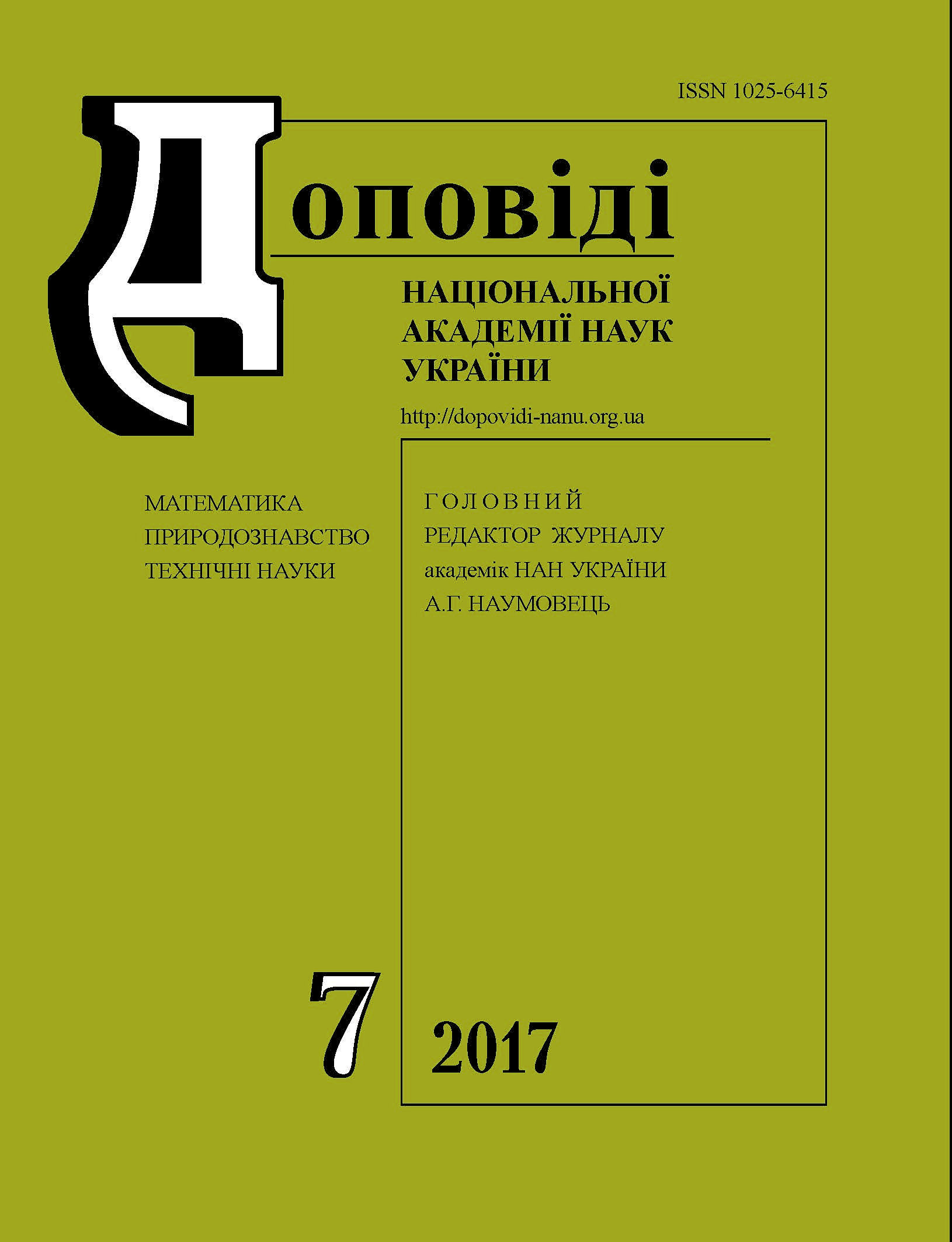Hybrid porous polymers based on derivatives of polyvinyl alcohol and acrylic hydrogels
DOI:
https://doi.org/10.15407/dopovidi2017.07.069Keywords:
acrylic acid, dyes, functional hydrogels, hybrid polymers, N-isopropylacrylamide, polyvinyl alcohol, sorption, wastewater treatmentAbstract
Methods of synthesis of hybrid materials based on the sponge-like acetals of polyvinyl alcohol with the pore space which are partially impregnated by functional pH- and temperature-sensitive hydrogels (based on acrylic acid and N-isopropylacrylamide) have been developed, and their physicochemical properties (tensile strength and elasticity, sorption capacity, degree and rate of swelling) have been investigated. The synergistic improvement of properties of hybrid hydrogels in comparison with the components, from which they are constructed, is demonstrated, and the possibility of using these materials for the separation, removal, and concentration of dyes from polluted wastewaters is shown.
Downloads
References
Lee, K. & Mooney, D. (2001). Hydrogels for tissue engineering. Chem. Rev., 101, pp. 1869-1879 https://doi.org/10.1021/cr000108x
Qiu, Y. & Park, K. (2001). Environment-sensitive hydrogels for drug delivery. Adv. Drug Deliv. Rev., 53, pp. 321-339. https://doi.org/10.1016/S0169-409X(01)00203-4
Dong, L., Agarwal, A., Beebe, D. & Jiang, H. (2006). Adaptive liquid microlenses activated by stimuli responsive hydrogels. Nature, 442, pp. 551-554. https://doi.org/10.1038/nature05024
Discher D., Mooney D. & Zandstra P. (2009). Growth factors, matrices, and forces combine and control stemcells. Science, 324, pp. 1673-1677. https://doi.org/10.1126/science.1171643
Balakrishnan, B. & Banerjee, R. (2011). Biopolymer-based hydrogels for cartilage tissue engineering. Chem. Rev., 111, pp. 4453-4457. https://doi.org/10.1021/cr100123h
Calvert, P. (2009). Hydrogels for soft machines. Adv. Mater., 21, pp. 743-756. https://doi.org/10.1002/adma.200800534
Lake, G. & Thomas, A. (1967). The strength of highly elastic materials. Proc. R. Soc. A., 300, pp. 108-119. https://doi.org/10.1098/rspa.1967.0160
Jing, G., Wang, Li, Yu, H., Amer, W. A. & Zhang, L. (2013). Recent progress on study of hybrid hydrogels for water treatment. Colloid. Surfaces A, 416, pp. 86-89. https://doi.org/10.1016/j.colsurfa.2012.09.043
Liu, Y. & Choi, H. (2013). Recent progress in smart polymer composite particles in electric and magnetic fields. Polym. Int., 62, pp. 147-151. https://doi.org/10.1002/pi.4441
Rao, P., Lo, I. M., Yin, K. & Tang, S. C. (2011). Removal of natural organic matter by cationic hydrogel with magnetic properties. J. Environ. Manage, 92, pp. 1690-1695. https://doi.org/10.1016/j.jenvman.2011.01.028
Yun, J., Jin, D., Lee, Y. & Kim, H. (2010). Photocatalytic treatment of acidic waste water by electrospun composite nanofibers of pH-sensitive hydrogel and TiO2. Mater. Lett., 64, pp. 2431-2434. https://doi.org/10.1016/j.matlet.2010.08.001
Malaviya, P. & Singh, A. (2011). Physicochemical technologies for remediation of chromium-containing waters and wastewaters. Crit. Rev. Env. Sci. Tech., 41, pp. 1111-1172. https://doi.org/10.1080/10643380903392817
Kryklya, S., Samchenko, Yu., Konovalova, V., Poltoratsky, T., Pasmurtseva, N. & Ulberg, Z. (2016). Hybrid pH and thermosensitive hydrogels based on polyvinyl alcohol and acrylic monomers. Magisterium. Chem. Sci., 63, pp. 20-28.
Samchenko, Yu., Ulberg, Z. & Korotych, O. (2011). Multipurpose smart hydrogel systems. Adv. Colloid Interface Sci., 168, No. 1–2, pp. 247-262 https://doi.org/10.1016/j.cis.2011.06.005
Haraguchi, K., Takehisa, T. & Fan, S. (2002). Effects of Clay Content on the Properties of Nanocomposite Hydrogels Composed of Poly(N-isopropylacrylamide) and Clay. Macromolecules, 35, pp. 10162-10171. https://doi.org/10.1021/ma021301r
Downloads
Published
How to Cite
Issue
Section
License
Copyright (c) 2024 Reports of the National Academy of Sciences of Ukraine

This work is licensed under a Creative Commons Attribution-NonCommercial 4.0 International License.



